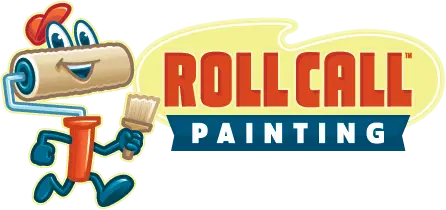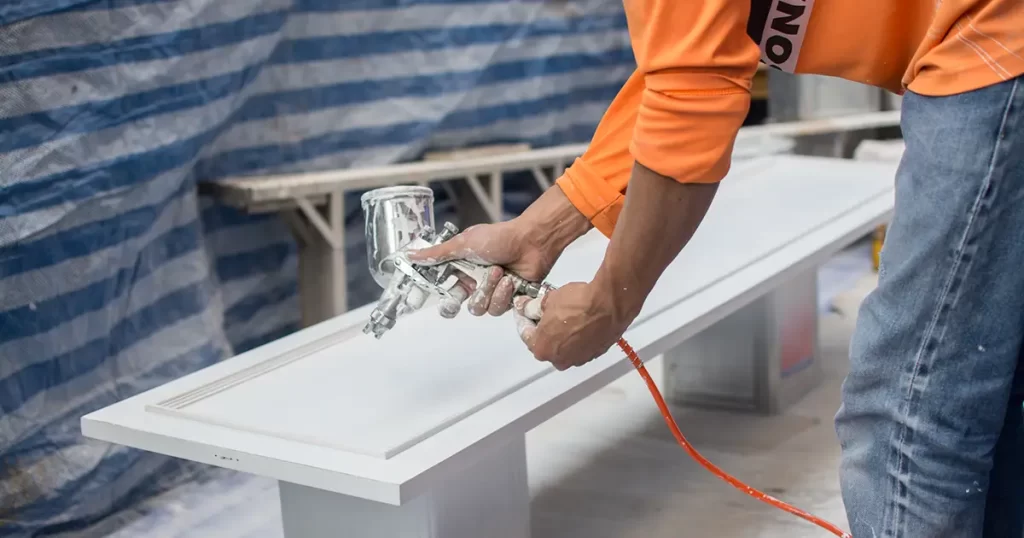
When it comes to the pros and cons of painting kitchen cabinets, there are clear trade-offs.
On the plus side, paint gives your kitchen a fresh, modern look for far less money and disruption than replacement.
On the downside, it won’t fix deeper issues. If doors are peeling, boxes are water-swollen, or you need more storage, painting won’t solve those problems.
So is it worth painting kitchen cabinets? Yes, as long as your cabinets are still in good condition and the layout works for you.
Simple Comparison
| Option | Cost* | Time* | Best For | Watch-Outs |
| Paint | $ | 3–7 days | Sound boxes, quick modern look, custom color | Won’t change layout; grain may show on oak unless filled |
| Reface | $$ | 1–2 weeks | Good boxes, new door style/wood species | No layout change; more cost than paint |
| Replace | $$$–$$$$ | 2–6+ weeks | New layout, added storage, failing cabinets | Highest cost and disruption |
*Relative indicators; varies by kitchen size and materials.
Why Painting Works
If your kitchen functions fine but looks dated, painting hits the sweet spot: you keep what’s structurally sound and refresh the part you see every day. Painting can also be a key part of a kitchen renovation project, offering a cost-effective way to update your space.
The room feels brighter, cleaner, and more current, without demolition dust or a month of trades in your house.
Benefits you’ll notice right away:
- Big aesthetic jump for a fraction of replacement
- Precise color control (warm whites, soft greiges, deep blues/greens, two-tone looks) with a wide variety of paints available for kitchen cabinets
- Faster project timelines and fewer moving parts
- Greener choice, reuse good boxes instead of landfilling
- Neutral painted cabinets photograph “move-in ready” if you plan to sell
- Painting kitchen cabinets is a diy friendly option, making it accessible for many homeowners to tackle themselves
Where Paint Falls Short (So You Don’t Force It)
Paint changes appearance, not function. If traffic flow, storage, or cabinet quality is the problem, coatings won’t solve it. That’s when refacing or replacement earns its keep.
Limitations to respect:
- Peeling thermofoil or swollen MDF/particleboard won’t hold a durable finish
- Existing finishes on cabinets can affect paint adhesion and the final result, so proper surface preparation is crucial for a lasting outcome
- Oak’s open grain can “telegraph” texture unless you add grain-filling
- Layout, cabinet sizes, and box quality remain exactly the same
- High-touch edges can chip over years without soft-close hardware and felt bumpers, requiring paint touch ups and ongoing touch ups to maintain a fresh appearance
Is It Worth Painting Kitchen Cabinets?
For sturdy boxes and doors, yes, it’s worth painting kitchen cabinets. The value per dollar is hard to beat, and the kitchen feels “new” without changing the footprint.
If your priority is a different door profile or more storage, paint alone won’t satisfy, refacing or replacement is a better fit.
Quick rule of thumb:
- Worth it: Sound cabinets + you want color, freshness, and speed
- Not worth it: Failing doors/boxes or you need layout/storage changes
Preparation That Makes or Breaks the Project
When it comes to painting kitchen cabinets, preparation is the foundation of a flawless, long-lasting result. Skipping or rushing this step is the fastest way to end up with peeling paint or a less-than-professional-looking finish.
Start by taking a close look at your existing cabinets. Check the cabinet boxes, doors, and drawers for any signs of damage. If you spot cracks, holes, or dents, fill them with wood filler and sand them smooth. This ensures your painted cabinets will look seamless and new.
Next, give your kitchen cabinets a deep clean. Years of cooking can leave behind grease and grime that sabotage paint adhesion. Use a degreaser or a strong soap-and-water solution to scrub every surface, paying special attention to corners and edges.
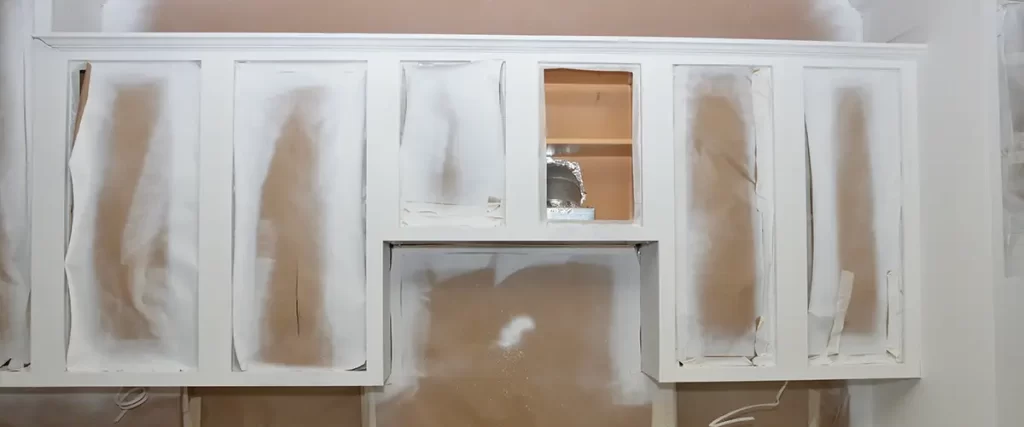
Once clean, lightly sand all surfaces to create the perfect texture for the paint to grip. This step is especially important for glossy or previously finished cabinets, as sanding helps the new paint bond for a durable finish.
Don’t forget to remove all cabinet hardware (hinges, knobs, and pulls) before you start painting. This keeps them free of paint splatters and makes it easier to reach every inch of the cabinet doors and drawers. Labeling each piece as you go will make reassembly a breeze.
By investing time in thorough preparation, you set yourself up for success. The result? Freshly painted cabinets that look beautiful, resist daily wear, and stand the test of time in your kitchen.
DIY vs. Pro: What Actually Changes
DIY can look great if you’re meticulous and patient. The learning curve is real (degreasing, sanding uniformly, picking the right primer, laying thin coats).
Hiring a pro buys you consistency, speed, and containment. Think sprayed finishes, clean masking, substrate-specific products, and a clear warranty.
When to lean DIY:
- You have space for clean drying racks and good ventilation
- You’re comfortable with sanding, masking, and light sprayer work
- The timeline is flexible and you enjoy hands-on projects
When to hire a pro:
- You want a uniform, “factory-like” sprayed finish
- Minimal disruption matters (zip walls, dust control, off-site door spraying)
- You prefer predictable timing and a single accountable team
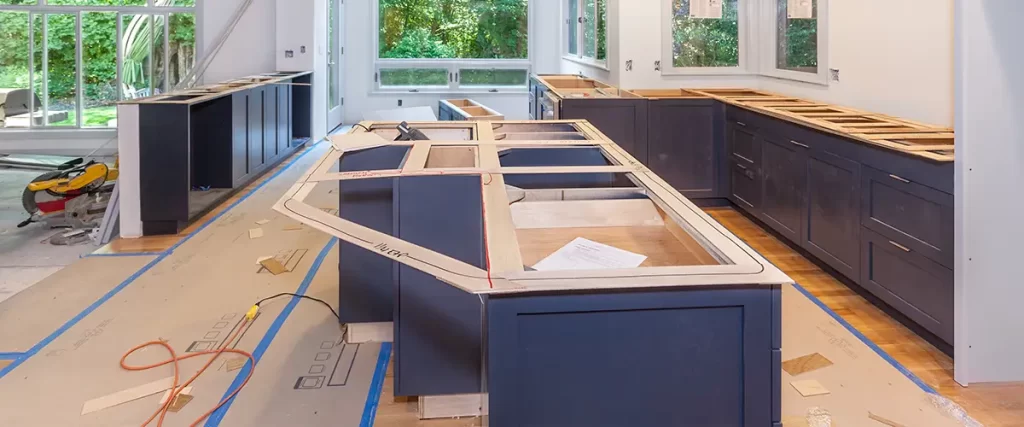
The Process That Protects the Finish
A durable result isn’t about one miracle paint; it’s about a disciplined sequence. Label doors, bag hardware, and set up a clean workspace.
Degreasing is non-negotiable. Kitchen residues sabotage adhesion even when surfaces “look” clean.
Then comes scuff-sand, minor repairs, bonding primer, thin color coats, and patience during cure. Respecting each step gives you the long wear you’re paying for.
Minimum viable steps:
- Label/photograph, remove doors & drawers
- Degrease thoroughly (TSP substitute or pro degreaser)
- Scuff-sand; fill dings, caulk hairline seams
- Bonding primer chosen for your substrate
- Two thin topcoats (sand lightly between)
- Allow proper cure before heavy use
- Reassemble; consider new pulls and soft-close hinges
Coatings, Sheens, and Color
Cabinet-grade acrylic urethanes and water-borne alkyd hybrids have become the go-to for busy kitchens. They level nicely, resist yellowing, and clean up well. Sheen matters: satin is forgiving and modern; semi-gloss is brightest and most wipeable; matte looks stylish but can be less practical for heavy traffic. Always test a real swatch in your lighting before committing.
Smart picks to consider:
- Coatings: Cabinet-grade acrylic urethane or water-borne alkyd hybrid
- Sheen: Satin for balance; semi-gloss for max wipe-ability
- Colors: Warm whites/creams, greiges that bridge cool counters & warm floors, deeper tones on islands or lowers
- Two-tone strategy: Light uppers, richer lowers for contrast and balance
What About Oak Grain?
Open-grained woods like oak can show texture beneath paint. Some homeowners like the subtle character; others want glass-smooth. If sleek is the goal, request grain-filling during prep. It costs more and adds time, but that’s the route to a contemporary, “factory” look.
Grain options:
- Embrace the texture for a natural, painted-wood feel
- Add pore/grain filler for a smooth, modern finish
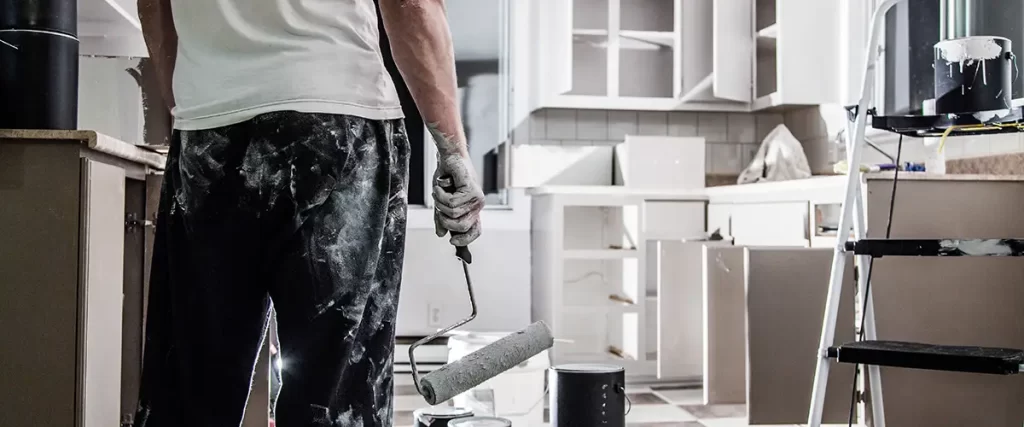
When Painting Is the Wrong Tool
There are honest “no-paint” scenarios. If the vinyl layer (thermofoil) is peeling, the substrate is failing. If MDF/particleboard is swollen, fasteners and edges won’t hold.
Moisture problems in the room will shorten the life of any coating. And if you dislike the layout, a finish change won’t make you like using the kitchen.
Choose refacing or replacement if:
- Doors are peeling thermofoil or boxes are water-damaged
- You want a new door profile (shaker, slab, inset) and matching frames
- Storage and workflow need real carpentry changes
- Ventilation/humidity issues aren’t solved yet
Alternatives in a Nutshell
Refacing is ideal when your cabinet boxes are structurally sound but your doors are dated or damaged. However, the condition of existing finishes on your cabinets can affect how well new materials adhere and the final appearance, so it’s important to assess them before starting.
Refacing gives your kitchen a new style by replacing doors and drawer fronts, then applying a matching laminate or veneer over exposed frame surfaces.
You get a refreshed look without touching the layout, and you can choose from various finish options, including a painted finish for a sleek, uniform appearance.
Replacement, on the other hand, gives you a clean slate. It solves bigger functional issues like lack of storage, awkward layouts, or undersized uppers. You’ll also get the chance to upgrade materials, add real wood doors, or change your kitchen’s footprint.
- Reface if: The doors need updating, but the bones are solid.
- Replace if: You want new layout options, added storage, or to address underlying structural or material issues.
Costs and Timelines You Can Actually Plan Around
Painting remains the most budget friendly option for a kitchen upgrade. Most professional painting projects take 3–7 working days, especially if cabinet doors are sprayed off-site. It’s also the least disruptive. You can often keep using your kitchen.
Refacing takes longer, typically 1 to 2 weeks, but gives you new doors and visible surfaces without changing boxes. It’s more cost effective than replacing everything, while still providing major aesthetic appeal.
Full replacement is the most involved. You’re looking at 2–6+ weeks depending on the complexity of the layout, material availability, and whether you’re reworking electrical or plumbing. But it’s the only option when you need to fix deep durability concerns or increase kitchen size.
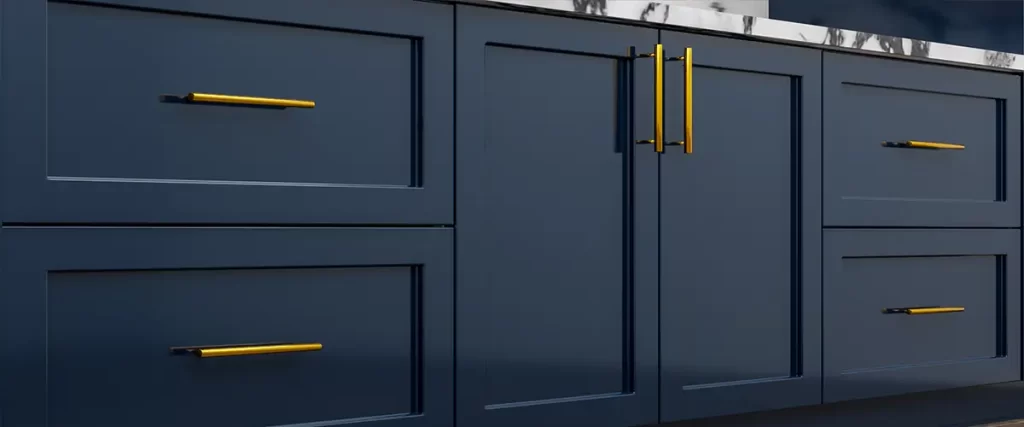
Living With Painted Cabinets
Painted cabinets are durable, but they’re not immune to wear. With the right products and habits, you can keep them looking freshly painted for years.
Start with a quality clear coat that resists stains and moisture. Then be gentle, especially during the curing phase, which can take up to two weeks after the finish feels fully dry.
Simple care tips to protect durability:
- Clean with mild soap and microfiber cloths, avoid harsh abrasives.
- Add soft-close hinges and felt bumpers to reduce impact damage.
- Avoid hanging damp towels on door edges.
- Keep a small jar of touch-up paint for occasional chips on high-use doors.
Painted cabinets are easy to maintain, but just like stained cabinets, they need thoughtful cleaning and use.
They’re not a temporary solution. They’re a long-lasting upgrade when done with thorough preparation and the right products.
Tips for a Successful Paint Job
A stunning, durable finish on your kitchen cabinets comes down to using the right products and techniques.
- Start by choosing a high quality paint made specifically for cabinets. These formulas are designed to handle the bumps, spills, and scrubbing that come with kitchen life.
- Trusted brands like Benjamin Moore and Sherwin Williams offer cabinet paint in a range of colors and sheens, so you can match your preferred design style.
- For the painting process itself, patience pays off.
- Apply multiple thin coats of paint, letting each coat dry fully before adding the next. This approach helps you avoid drips and ensures an even, professional looking finish.
- A foam roller is ideal for achieving a smooth, semi gloss surface on large, flat areas, while a high quality brush can help you get into corners and detail work.
- Work in a well-ventilated space and avoid painting in direct sunlight, which can cause the paint to dry too quickly and lead to imperfections.
- Once your final coat is dry, carefully reinstall your cabinet hardware and put the doors and drawers back in place.
- To keep your painted cabinets looking their best, keep a small container of touch up paint on hand for quick fixes.
- With the right paint, careful application, and a little ongoing maintenance, your kitchen cabinets will stay fresh and beautiful for years, making painting kitchen cabinets a cost effective and rewarding upgrade.
Quick, Honest FAQs
Is it worth painting kitchen cabinets?
Yes, when the cabinets are in good condition. It’s a cost effective way to get a major visual upgrade without tearing out your kitchen. You avoid the high price tag of new cabinets and get to enjoy a space that feels brand new.
What types of cabinets are best for painting?
Solid wood or paint-grade doors with stable frames are ideal. Avoid painting if the cabinets have peeling laminate, major water damage, or structural problems.
Is it worth it to paint cabinets yourself?
DIY can work if you’re disciplined about sanding, priming, and giving coats time to fully dry. But if you want a flawless finish and fewer headaches, a professional is your best bet.
How does painting compare to refacing?
If your goal is to change color and save money, paint the cabinets. If you want to change the style or material (like switching from laminate to real wood), refacing is a better choice.

Final Take
When weighing the pros and cons of painting kitchen cabinets, it’s clear: painting is a smart, budget-friendly choice when your layout works and your cabinets are still in good shape. You get a beautiful transformation, complete color flexibility, and long-term durability. Without the price or hassle of a full remodel.
Respect the process: prep thoroughly, allow coatings to fully cure, and make small upgrades like new hinges or updated flooring to enhance the final look. And if your cabinets just aren’t built to last or you need more space, refacing or replacement is a smarter long-term investment.
Either way, you’re making an informed decision, and that’s always worth it.
Ready to Give Your Kitchen a Fresh Start?
If your cabinets are still in good shape but just look tired or dated, a professional cabinet painting job can completely transform the feel of your kitchen. No more mess or costly full remodel.
At Roll Call Painting, we’ve helped tons of homeowners in Wichita turn “just fine” kitchens into something they genuinely love walking into every day. We’re big on prep, honest advice, and doing things the right way so your finish actually lasts.
Whether you already know what colors you want or need a little help deciding, we’re happy to talk it through.
Give us a call at (316)-800-6994 or reach out here to schedule a free in-person estimate.
We’ll take care of the details so you can enjoy a kitchen that looks and feels brand new.
